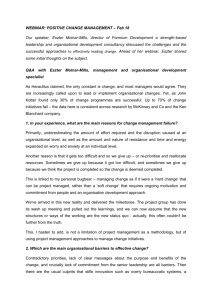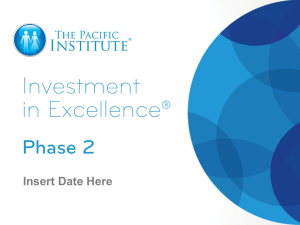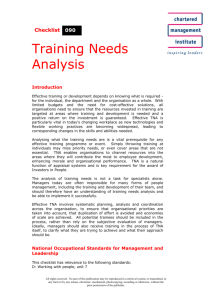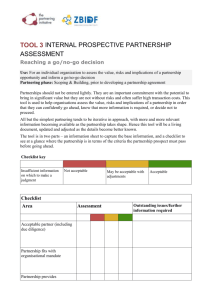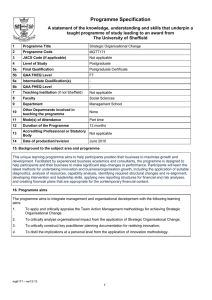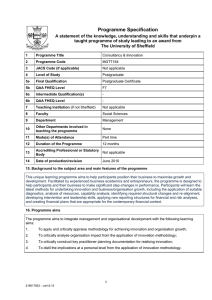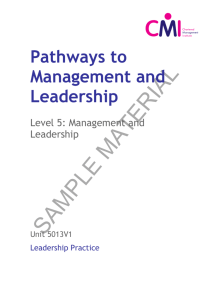Module 1: Records management function
advertisement
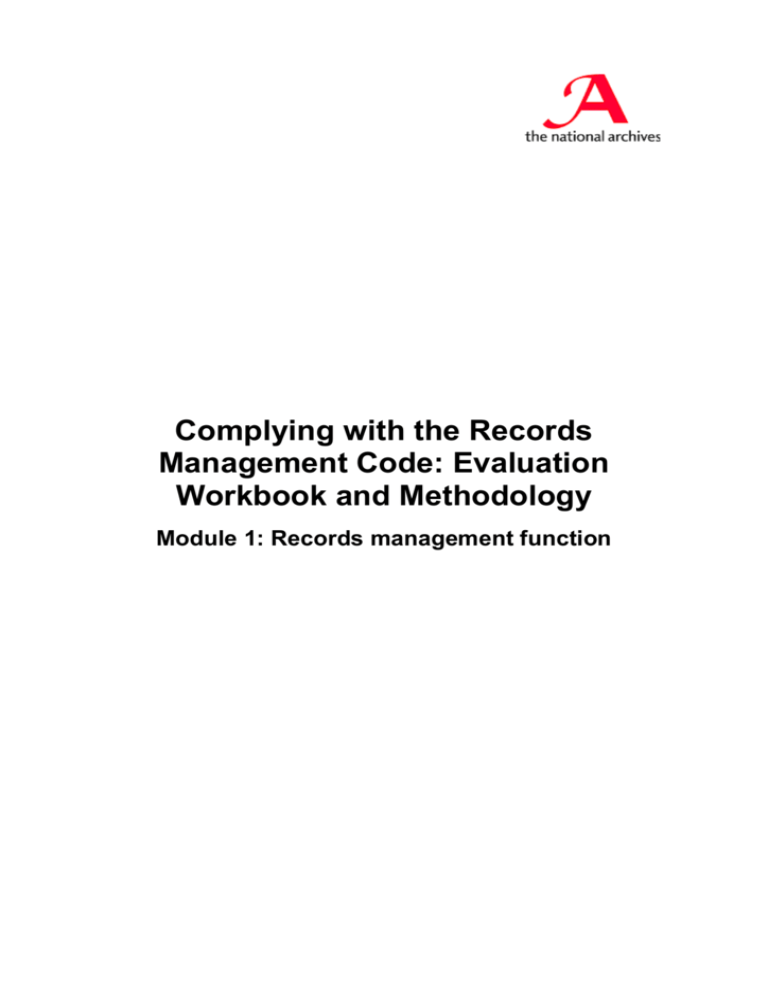
Complying with the Records Management Code: Evaluation Workbook and Methodology Module 1: Records management function Module 1: Records management function General 3.1 This module deals with the need to establish records management as a strategic corporate function within an organisation and to ensure it receives the necessary levels of organisational support. It also identifies the need to have organisational links or close liaison between records management and management of freedom of information, data protection and other information management functions. 3.2 The relevant workbook questions which should be used to assess the level of compliance relating to these activities commence on page 4. Context and objectives 3.3 The Records Management Code states that: The records management function should be recognised as a specific corporate programme within an authority and should receive the necessary levels of organisational support to ensure effectiveness. It should bring together responsibilities for records in all formats, including electronic records, throughout their life cycle, from planning and creation through to ultimate disposal. It should have clearly defined responsibilities and objectives, and the resources to achieve them. It is desirable that the person, or persons, responsible for the records management function should also have either direct responsibility or an organisational connection with the person or persons responsible for freedom of information, data protection and other information management issues. This text recognises that records and information are an asset that requires management on the same level as human resources, finances and property. Relevant guidance 3.4 Public authorities often fall into discrete sectors (i.e. central government, local government, health, further education, police etc.) Each sector often has its own sector specific rules, regulations and guidance. This is especially true of the police and the health sectors and readers of this workbook should use such guidance where applicable when establishing a record keeping or management system. Additional guidance on this subject has been provided by The National Archives (TNA) and is available on the TNA web-site. It includes: e-Government Policy Framework for Electronic Records Management This policy framework was developed by The National Archives’ predecessor – the Public Record Office - with the Office of the e-Envoy. It identifies the management of electronic records as one of the vital underpinning elements in the government's modernisation programme, and that it was key to the government target for online service delivery in 2005. It also recognised that this function would be critical in helping organisations to meet the requirements of the Freedom of Information Act 2000 upon its implementation in January 2005. It is available on TNA’s website at: http://www.nationalarchives.gov.uk/electronicrecords/pdf/egov_framew ork.pdf It should be noted that whilst the deadlines for specific Modernising Government targets may have passed the policy framework continues to be valid even after specific goals identified in the Modernising Government agenda have been achieved. 3.5 Additional advice on the strategic issues addressed by the records management function can be found in the following publication: Guidelines for management, appraisal and preservation of electronic records: volume 1 principles This guidance document sets out the principles of electronic records management and outlines broad strategies for translating the principles into practice. It can be accessed at the following web address: http://www.nationalarchives.gov.uk/electronicrecords/advice/guidelines. htm Evaluation questionnaire 3.6 Evaluation of this module should enable the following activities: Review of the structure of the organisation to see what changes might be required to achieve the objective of establishing and supporting the record management function in an organisation. Ensure that all information functions are part of the same command or, alternatively, working arrangements for close liaison have been established. Ensure that adequate resources to support the records management function are in place, working with those responsible for determining the level of resources and those responsible for assigning such resources 3.7 To assess whether the required elements are in place see the questions in the table on the following page, numbered 1 to 8 in this workbook... Guidance on how to analyse the responses to these questions is provided in the chapter entitled Risk evaluation and development of mitigation strategies. 1. Is the records management function formally recognised within the organisation as a specific corporate programme? Yes No N/A Yes No N/A Yes No N/A Yes No N/A Yes No N/A Yes No N/A Reference 2. Does the record management function bring together responsibilities for records in all formats, including electronic records, throughout their life cycle, from planning and creation through to ultimate disposal? Reference 3. Does the records management function have clearly defined responsibilities and objectives? Reference 4. Has the structure of the organisation been reviewed to see what changes might be required to achieve these objectives? Reference 5. Is the records management function formally resourced to achieve its responsibilities and objectives? (e.g. budgets(s) allocated staff etc) Reference 6. Does the person responsible for the records management function have direct responsibility for, or an organisational connection with, those responsible for freedom of information, data protection and other information management issues? Reference 7. Does the record management function bring together responsibilities for records in all formats, including electronic records, throughout their life cycle, from planning and creation through to ultimate disposal? Yes No N/A Yes No N/A Reference 8. Is there a mechanism to regularly review the records management function, together with its objectives and resources to ensure it continues to be effective? Reference


